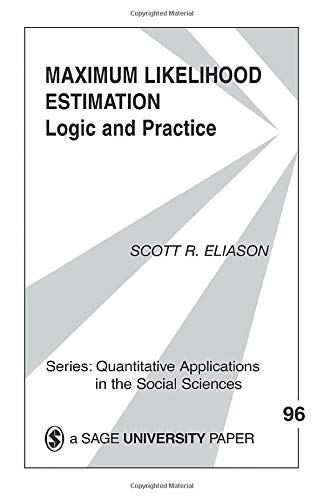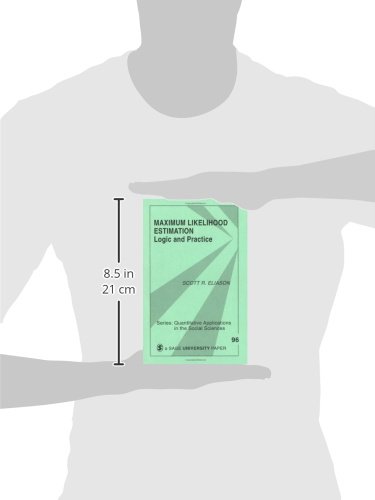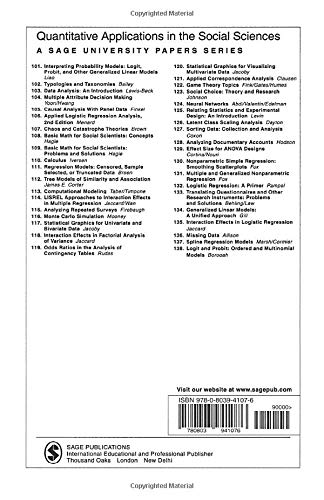Customer Services
Copyright © 2025 Desertcart Holdings Limited
Desert Online General Trading LLC
Dubai, United Arab Emirates




Maximum Likelihood Estimation: Logic and Practice (Quantitative Applications in the Social Sciences)
W**D
Has some value
The first step in common applications of probability is to figure out what distribution to use. That depends on the structure of your problem, and is up to you. This book helps with the second step: figuring out what set of values for that distribution's parameters give the best fit to your data.It was certainly interesting to see least squares regression derived using ML, instead of the usual geometric interpretation. It was quite worthwhile to see a mutual dependence metric that works when normal "correlation" doesn't. It also broadened my view, a little, to see standard linear and non-linear solution techniques in a different notation than usual.As you can see by the breadth of topics in this slim (82-page) book, the author covers a good bit of territory tangential to ML - in a larger book, that could have turned into a serious organization problem. About 10 of the book's pages give sample code in the Gauss language. That language isn't in the main stream of engineering computing, but a Matlab or Mathematica user can read it easily enough.I did learn a few useful things from this book - I won't be giving it away. It probably won't suit either the beginner in statistics or the specialist, though. If you're in the middle, like me, it has modest value.
D**E
Four Stars
a good primer on ML estimation
J**H
Five Stars
A little outdated but has important easy to understand information not found in other texts. A must to own.
D**N
Five Stars
An exceptional primer especially when methods such as SEM are becoming more widely used.
D**O
Just good.
I found useful only the first three chapters. For the rest probably adding some more detail and explanations (and pages) would have made it more clear and understandable. The first chapters are a good introduction. The examples in the later chapters are not very clear. At least they do not easily follow from the material previously presented.
M**H
A well thought out introduction
I bought this slim book becuase I intend to start applying maximum likelihood to my own work and so needed a half-decent intro. While you'll need some understanding of calculus and linear algebra it isn't too involved and explains the concepts well with lots of examples. Also, I don't work in the social sciences but still found it useful and so would recommend to anyone interested in maximum likelihood estimation.One star missing simply becuase it is slim and I would have preferred something more extensive.
Trustpilot
1 month ago
2 days ago